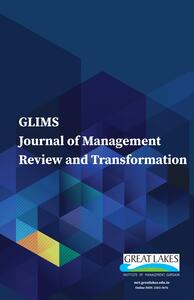
1 Department of Commerce, Hindu College, University of Delhi, New Delhi, India
Creative Commons Non Commercial CC BY-NC: This article is distributed under the terms of the Creative Commons Attribution-NonCommercial 4.0 License (http://www.creativecommons.org/licenses/by-nc/4.0/) which permits non-Commercial use, reproduction and distribution of the work without further permission provided the original work is attributed.
Economies that have a negotiated regional trade agreement (RTA) are liberalising various economic norms among member nations (including trade, investment, environment and other strategic parameters) to strengthen long-term flows of goods, services and capital. Hence, numerous studies have been conducted to empirically examine the impact of regional integrations on trade and investment using various econometric tools and techniques. The present study was an attempt to state and identify the contribution of such studies. An insight into the existing literature depicted varied results; rather than: some studies stated that the regional economic integration is facilitating world trade and also supporting the flow of capital among member nations, whereas few studies depicted a non-collaborated association between RTA and trade/investment. Further, a review of the literature depicted that few RTAs still need to work towards enhancing the depth of trade and investment provision to further strengthen the flows of trade and investment in the years to come.
Regional trade agreement, trade, investment, trade creation, trade diversion, investment creation, investment diversion
Afesorgbor, S., & Bergeijk, P. A. G. (2011). Multi-membership and the effectiveness of regional trade agreements in Western and Southern Africa: A comparative study of ECOWAS and SADC. (Institute of Social Sciences Working Paper No. 520). http://ssrn.com/abstract=1766522 or http://dx.doi.org/10.2139/ssrn.1766522
Akhter, N., & Ghani, E. (2010). Regional integration South Asia: An analysis of trade flows using the gravity model. Pakistan Development Review, 49(2), 105–118.
Asante, G. N., & Stanley, A. (2022). Prospect of economic unions on intra-regional trade in Africa. In A. A. Amin, R. N. Tawah & A. Ntembe (Ed.s), Monetary and Financial Systems in Africa (pp. 369–393). Springer.
Baltagi, B. H., Egger, P., & Pfaffermayr, M. (2008). Estimating regional trade agreement effects on FDI in an interdependent world. Journal of Econometrics, 145(1–2), 194–208.
Carr, D. L.., Markusen, J. R., & Maskus, K. E. (1998). Estimating the knowledge- capital model of the multinational enterprise (National Bureau of Economic Research Working Paper No.6773).
Guilhot, L. (2010). Assessing the impact of main East-Asian free trade agreements using a gravity model. Economic Bulletin, 30(1), 282–291.
Handoyo, R. D., Sugiharti, L., & Esquivias, M. A. (2021). Trade creation and trade diversion effects: The case of the ASEAN plus six free trade area. Bulletin of Monetary Economics and Banking, 24(1), 93–118.
Jang, Y. J. (2011). The impact of free trade agreements on foreign direct investment among developed countries. World Economy, 34(9), 1628–1651.
Jaumotte, F. (2004). Foreign direct investment and regional trade agreements: The market size effect revisited. (Working Paper No. 04/206). http://www.imf.org/external/pubs/cat/longres.aspx?sk=17770.0.
Joši?, H., & Basic, M. (2021). Trade creation and trade diversion effects from Croatia’s CEFTA and EU membership. Ekonomski Pregled, 72, 489–521. 10.32910/Ep.72.4.1
Lee, J.-W., & Shin, K. (2006). Does regionalism lead to more global trade integration in East Asia? North American Journal of Economics and Finance, 17(3), 283–301.
Leshier, M., & Miroudott, S. (2006). Analysis of the economic impact of investment provision in regional trade agreements. (Working Paper No. 36). http://search.oecd.org/officialdocuments/displaydocumentpdf/?doclanguage=en&cote=td/tc/wp(2005)40/final
Mattoo, A., Mulabdic, A., & Ruta, M. (2022). Trade creation and trade diversion in deep agreements. Canadian Journal of Economics [Revue canadienne d’économique], 55(3), 1598–1637.
Medvedev, D. (2006). Beyond trade: The impact of preferential trade agreements on foreign direct investment inflows. (World Bank Policy Research Working Paper No. 4065). http://elibrary.worldbank.org/doi/book/10.1596/1813-9450-4065
Muhammad, K., & Yucer, A. (2010). Trade effects of regional trade agreements: Trade creation and trade diversion within the Western Hemisphere, International Journal of Economic Issues, 3(2), 221–238.
Park, I., & Park, S. (2008). Reform creating regional trade agreements and foreign direct investment. Pacific Economic Review, 13(5), 550–566.
Rahman, M., Shadat, W. B., & Das, N. C. (2006). Trade potential in SAFTA: An application of augmented gravity model. (Centre for Policy Dialogue Working Paper No. 61). http://ideas.repec.org/p/pdb/opaper/61.html
Singh, L. B. (2021, November). Impact of India-ASEAN free trade agreement: An assessment from the trade creation and trade diversion effects. Foreign Trade Review, 56(4), 400–414.
Taguchi, H. (2015). Trade creation and diversion effects of ASEAN-plus-one free trade agreements. Economics Bulletin, 35(3), 1856–1866.
Uttama, N. P. (2021, March). International investment agreements provisions and foreign direct investment flows in the regional comprehensive economic partnership region. Economies, 9(1), 1–23.
Velde, D. W., & Bezemer, D. (2006). Regional integration and foreign direct investment in developing countries. Transnational Corporation, 15(2), 41–70.
Vollrath, T. L., & Hallahan, C. B. (2009). Economic costs and payoffs of bilateral/regional trade agreements. (Agricultural and Applied Economics Association Working Paper No. 49375). http://ideas.repec.org/p/ags/aaea09/49375.html
Yeyati, E. L., Stein, E., & Christian, D. (2003). Regional integration and the location of FDI. (Inter-American Development Bank Working Paper No. 414). http:dx.doi.org.org/10.2139/ssrn.1818703